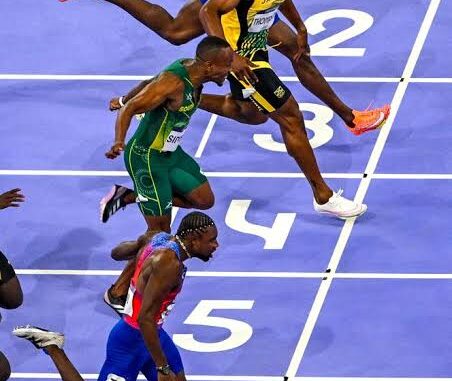
Few moments in Olympic history capture the essence of pure competition like a photo finish. Track and field has delivered countless electrifying races, but there are some that stand above the rest — where a fraction of a second, barely visible to the human eye, determined who would stand atop the podium. On this day, we remember the closest finish in modern Olympic history, a race that has gone down in sporting folklore for its drama, tension, and razor-thin margin of victory.
It was the men’s 100 meters final — the crown jewel of the Olympic Games, often hailed as the race to decide the “fastest man on earth.” The anticipation was deafening as the athletes settled into their blocks, each carrying the weight of years of training and the hopes of their nations. The gun fired, and in less than 10 seconds, history would be made.
From the very start, the race was explosive. The athletes burst down the track with unmatched ferocity, their strides almost synchronized, their speed defying belief. Spectators in the stadium and millions watching on television could not tell who had the edge. As they approached the final meters, it became clear that this was no ordinary Olympic sprint. The frontrunners were neck and neck, their bodies straining, their faces etched with determination.
The finish line arrived in a flash. To the naked eye, it seemed like two — perhaps even three — athletes had crossed at the exact same moment. The crowd erupted in confusion. Commentators hesitated, unable to call a winner. For nearly a minute, the stadium was suspended in suspense, waiting for technology to deliver what human eyes could not.
When the result finally appeared on the scoreboard, the stadium roared. The gold medal had been decided by one-thousandth of a second — a margin so tiny it was practically imperceptible. The winner’s time was officially rounded to the hundredth, as per Olympic rules, but the photo-finish images revealed just how narrow the victory had been.
That moment was more than a race — it was a reminder of the sheer unpredictability and drama of sport. Athletes spend years fine-tuning every detail of their training: the explosive start, the acceleration phase, the transition to top speed, and the desperate dip at the line. Yet, at the Olympic Games, all of it can come down to a mere blink.
The runner who finished second — if one can even call it that given the margin — was gracious in defeat, acknowledging the winner with respect despite the heartbreak. That sportsmanship added another layer of beauty to the occasion. For fans, it was a lesson in humility: greatness is not always measured only by victory, but also by how one accepts the narrowest of losses.
Today, as we look back on this unforgettable Olympic moment, it stands as a testament to human ability, resilience, and the thin line between glory and heartbreak. It reminds us why we watch the Games — for the stories that inspire, the rivalries that push athletes beyond their limits, and the finishes that etch themselves into history forever.
Truly, this was the closest finish in modern Olympic history — a race that will never be forgotten.
Be the first to comment